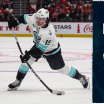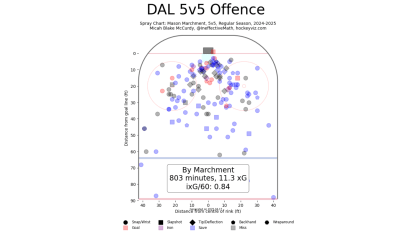Kraken general manager Jason Botterill hasn’t been shy about his off-season to-do list. As he looks to build his team into a perennial playoff contender, Botterill has been open about wanting to take steps to build his roster into one that has increased skill, size, and strength.
And last week, he took a definitive step in that direction when the Kraken traded a 2025 fourth-round and 2026 third-round pick to acquire 30-year-old forward Mason Marchment.
But when it comes to the newest Kraken player, how does his on-ice performance help fulfill the checklist Botterill has set forth?
Let’s dive in.
Contributing on the Scoresheet.
From a pure counting perspective, Marchment is coming off one of the best seasons of his career. He tied a career high in goals (22, last earned 2023-24), and matched his second-best point total (47, 2021-22). Beyond the totals, it’s noteworthy how many games it took him to score those points last year.
Marchment missed 20 games last season, recovering from injury after he took a puck to the face. So, if we adjust his point total based on how much he played, he scored 2.97 points and 1.4 goals per 60 minutes of play. Those are the second-highest scoring rates of his career.
Watch here as Marchment spearheads the rush attack, retrieves the puck, uses his body to shield and protect possession from Josh Morrissey (WPG 44) and ultimately attacks Connor Hellebuyck in close for a goal.


























